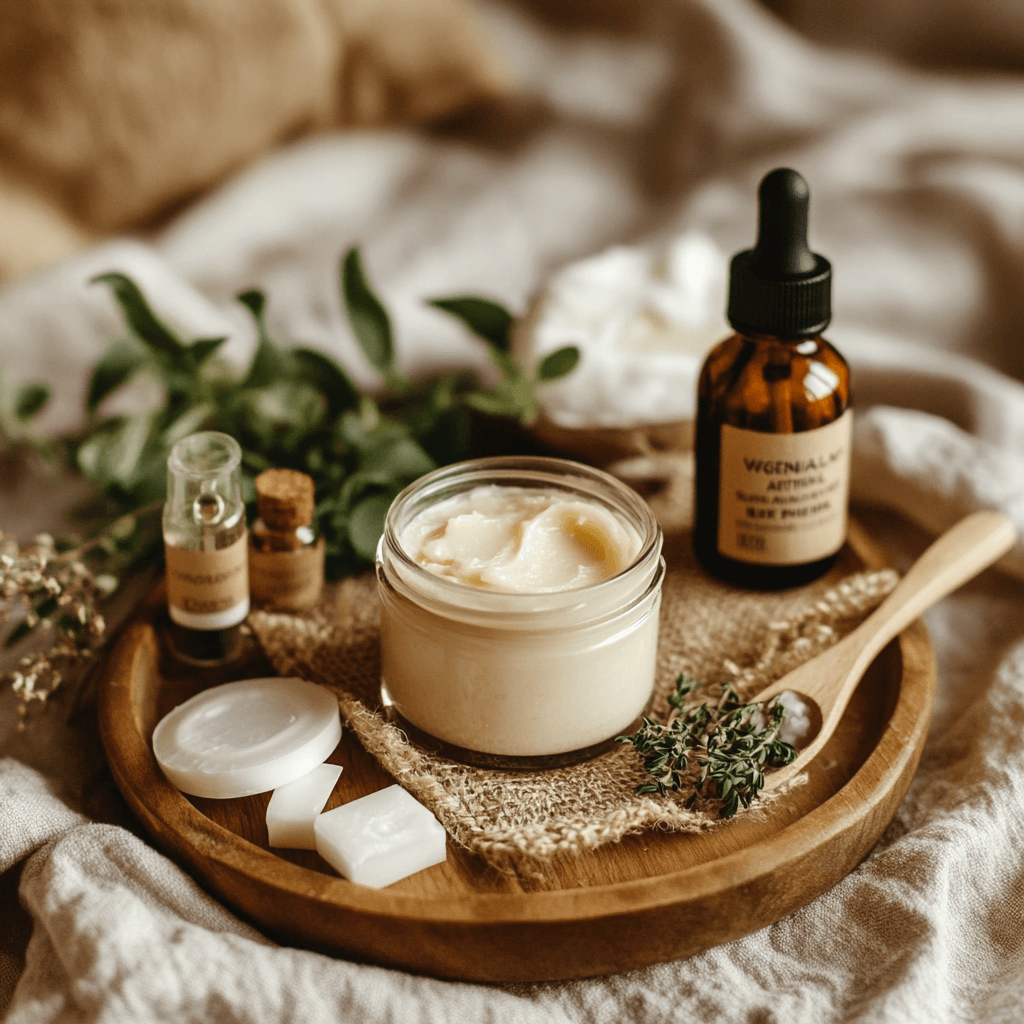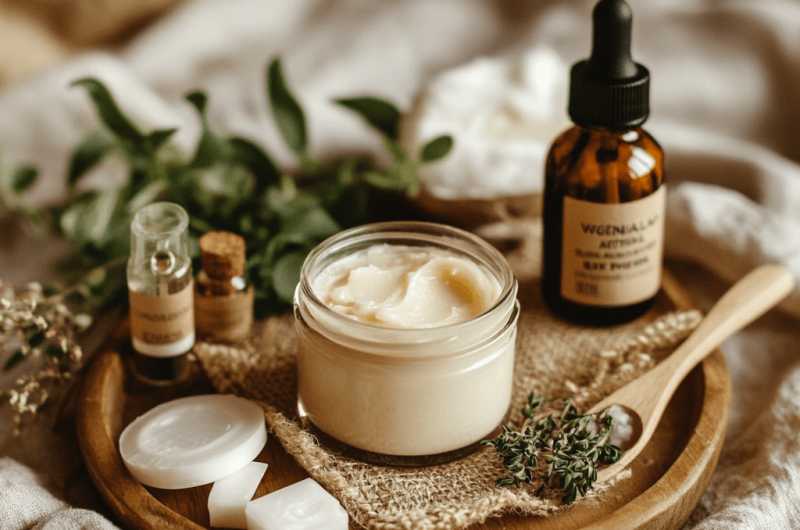Vegan antifungal cream is a natural alternative to conventional treatments for fungal skin infections such as athlete’s foot, candida rashes, nail fungus, or irritation in skin folds. These conditions are incredibly common—and often persistent. While over-the-counter antifungal creams can offer short-term relief, many contain synthetic preservatives, petroleum-based ingredients, or fragrances that irritate sensitive skin and disrupt the natural skin microbiome.
This vegan antifungal cream is a gentle yet powerful alternative, made entirely from plant-based oils and therapeutic essential oils. Whether you’re dealing with chronic foot fungus, candida rash under the breasts, or irritated skin around the nails, this recipe provides a nourishing solution without any animal-derived ingredients.
You can choose between two versions:
- Version 1 uses rosehip and black seed oil for regenerative, anti-inflammatory support.
- Version 2 includes pure gum spirits of turpentine, a traditional remedy known for penetrating deep and disrupting fungal biofilms.
Both are completely free from animal products, synthetic chemicals, and preservatives—making them safe for long-term, natural skincare.
Vegan Antifungal Cream Recipe
120
ml5
minutes10
minutes30-40
minsIngredients
- Version 1: With Rosehip + Black Seed Oil
½ cup unrefined shea butter
¼ cup coconut oil
2 tbsp rosehip oil
2 tbsp black seed oil
10 drops oregano essential oil
10 drops eucalyptus essential oil
15 drops clove essential oil
10 drops geranium essential oil
- Version 2: With Pure Gum Spirits of Turpentine
½ cup unrefined shea butter
¼ cup coconut oil
¼ cup pure gum spirits of turpentine (Pinus palustris)
10 drops oregano essential oil
10 drops eucalyptus essential oil
15 drops clove essential oil
10 drops geranium essential oil
Directions
- In a double boiler, melt the shea butter and coconut oil until liquid.
- Remove from heat and allow to cool slightly (but not solidify).
- Stir in either the rosehip + black seed oils (Version 1) or turpentine (Version 2).
- Add all essential oils and blend well using a wooden or glass stirrer.
- Pour the mixture into a clean, sterilised glass jar.
- Let cool completely to solidify. Optional: whip with a hand mixer for a lighter texture.
Notes
- Always perform a patch test with the turpentine version. Do not apply to broken skin
- Shelf life:
Version 1: 4–6 months
Version 2: Up to 12 months (turpentine acts as a natural preservative)
Ingredient Benefits Recap
Base Oils & Butters
- Shea Butter: Rich in fatty acids and antioxidants; supports healing and barrier repair.
- Coconut Oil: Antifungal (contains lauric and caprylic acid), moisturising, and protective.
- Rosehip Oil: Regenerates skin, rich in vitamins A & C; helps reduce scars and pigmentation.
- Black Seed Oil: Anti-inflammatory and antifungal; thymoquinone targets dermatophytes and yeasts.
- Turpentine (Pinus palustris): Traditionally used for deep skin cleansing; antifungal and antimicrobial.
Essential Oils
- Oregano Oil: High in carvacrol, a powerful antifungal compound.
- Eucalyptus Oil: Antimicrobial, cooling, and anti-inflammatory.
- Clove Oil: Contains eugenol; combats fungal biofilms and relieves itching.
- Geranium Oil: Antibacterial, antifungal, and skin balancing.
Final Thoughts
This vegan antifungal cream is an effective, toxin-free solution for skin fungal issues. Whether you prefer the gentler oil-based blend or the more powerful turpentine version, both are deeply nourishing, antimicrobial, and safe for ongoing use. Best of all, you control the ingredients, so you can avoid the unnecessary chemicals found in commercial creams. Give your skin the clean, plant-based care it deserves!





